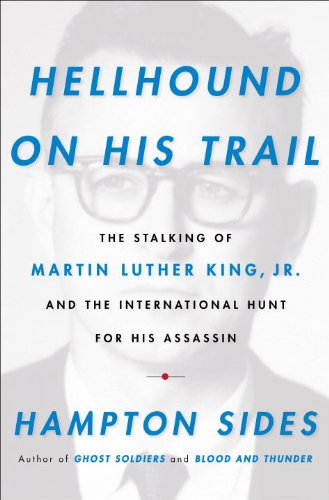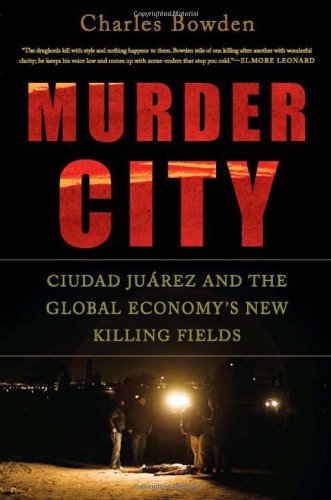Writer Hampton Sides was a 6-year-old living in Memphis when Martin Luther King Jr. was assassinated on April 4, 1968. “I remember the tension,” he says. “I remember seeing tanks, and I remember feeling that our city was ripping apart.” Four decades later, Sides, an editor-at-large for Outside magazine and the author of the historical books Ghost Soldiers and Blood and Thunder, has returned to the subject of King’s assassination. In his new book, Hellhound on His Trail, Sides carefully weaves the movements of King’s assassin, James Earl Ray, with those of King, who had traveled to Memphis to support sanitation workers on strike.
It was public knowledge, Sides says, that King was staying at the Lorraine Hotel. Though it would be unheard of today, both King’s location and his room number had been reported in the local media. “Not only that, but King had no security detail. He had no bodyguards, no entourage watching out for him,” Sides says. “It’s actually extraordinary how little security King had. It certainly seems ridiculous to us now … [but] Ray was a news junkie. It would have been easy [for him to determine King’s location].”
Ray checked into a flophouse across the street from the Lorraine. He paid a week’s rent. From the room he rented, there was no direct line of sight onto the balcony where King was shot. Instead, he went down the hall to a filthy communal bathroom, where he could see King’s balcony if he leaned out the window. “After the assassination, the police found that the window in the bathroom had been jerked up 5 inches. The screen had been jimmied from the groove, and there was a palm print on the wall, and various people in the flophouse heard a shot coming from that bathroom,” Sides says. “It became pretty clear that’s where the shot came from.”
Within seconds, Memphis police officers were on the scene, trying to determine who had killed King.  Remarkably, Ray was able slip away. “He ran down the stairs, took a left and turned — and he was running toward his car, which was a white Mustang parked on the street, when he saw some policemen,” Sides explains. “He had to do a very impulsive thing: He ditched the weapon. Everything needed to solve that case was in the bundle with the weapons and various other belongings that he had there. But if he hadn’t done that, he would have been caught immediately with the weapons in his arms. So he jumped in the car and took off.” Two months later, the FBI tracked down Ray in London, where he was taken into custody and extradited back to the United States. How Ray was able to evade a worldwide man hunt, and whether he had help in doing so, are questions that linger in Sides’ imagination. “I think he had some help along the way,” Sides says. “How did he gather all of the alias [that he used during the manhunt]? There are plenty of unanswered questions.”
Remarkably, Ray was able slip away. “He ran down the stairs, took a left and turned — and he was running toward his car, which was a white Mustang parked on the street, when he saw some policemen,” Sides explains. “He had to do a very impulsive thing: He ditched the weapon. Everything needed to solve that case was in the bundle with the weapons and various other belongings that he had there. But if he hadn’t done that, he would have been caught immediately with the weapons in his arms. So he jumped in the car and took off.” Two months later, the FBI tracked down Ray in London, where he was taken into custody and extradited back to the United States. How Ray was able to evade a worldwide man hunt, and whether he had help in doing so, are questions that linger in Sides’ imagination. “I think he had some help along the way,” Sides says. “How did he gather all of the alias [that he used during the manhunt]? There are plenty of unanswered questions.”
RADIO TIMES
Americans consume on average 1 ½ teaspoons of salt a day – that’s more than twice the amount that we should be eating. Most of it comes from processed and restaurant food. High sodium intake has been linked to high blood pressure and cardiovascular disease. In fact, the American Medical Association has said that has many as 150,000 lives could be saved if Americans cut their salt intake in half. Last week the Institute of Medicine released a report outlining strategies for reducing salt intake, including urging the government to set limits in salt levels in food. This hour, we’ll examine our taste for salty food and look at ways to lower our salt intake. Our guests are Gary Beauchamp, director of the Monell Chemical Senses Center, Lawrence Appel, professor of medicine at Johns Hopkins University, and Krista Faron, a marketing analyst with Mintel International.
Ciudad Juarez is just across the Rio Grande from El Paso, Texas. What once was a border boom town after NAFTA spurred the building of factories is now best known for a horrific wave of violence that continues to escalate. The city’s murder rate soared from 207 in 2007, to 1,660 in 2008, to 2,660 in 2009, and is on an even higher pace this year. CHARLES BOWDEN has written a new book, Murder City: Ciudad Juarez and the Global Economy’s New Killing Fields, that offers bloody testimony to an epidemic of drug-trade-fueled murders that has turned Juarez into one of the most dangerous places on Earth.

 FRESH AIR
FRESH AIR